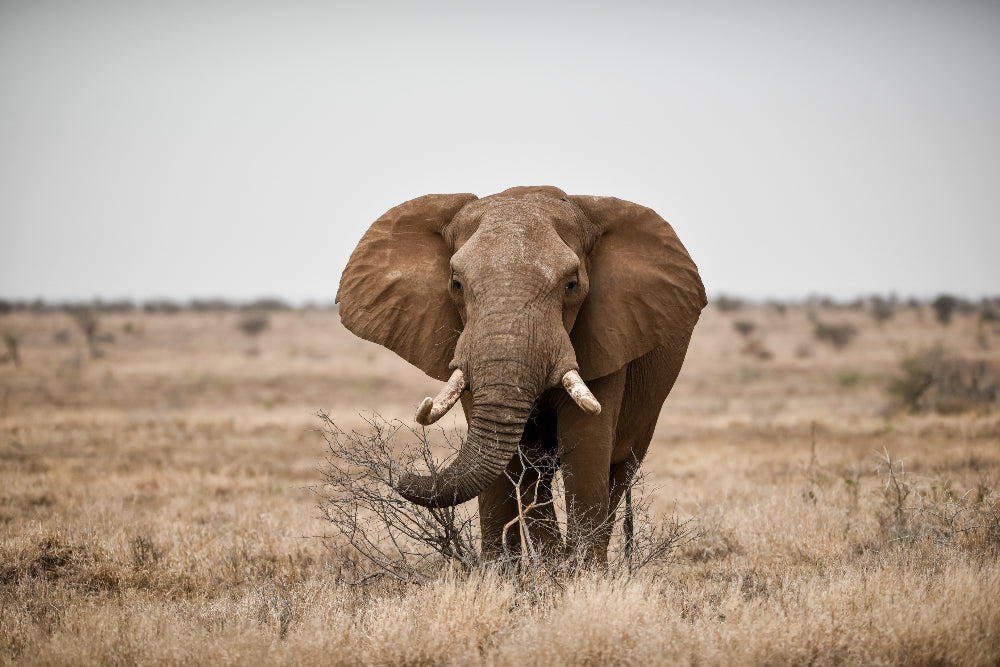
Elephants: Majestic Giants in Danger
Share
Introduction :
Elephants are a true symbol of wildlife and are much more than just land mammals. With their massive size, fascinating trunks and remarkable intelligence, these pachyderms play a vital role in ecosystems and human cultures. However, they face serious threats that put their survival at risk. Learn about their unique characteristics, the challenges they face and the efforts to conserve these majestic giants.

Elephant Portrait: Unique Features
The largest land mammals
Elephants are the largest land animals, with impressive dimensions. The African elephant can weigh up to 6 tons, while its Asian cousin reaches 5 tons. Their trunk, an extension of both the nose and the upper lip, is a versatile tool used for drinking, feeding, communicating, and even expressing emotions.
Ears with multiple functions
Elephants' ears aren't just for hearing. They also regulate their body temperature through a network of blood vessels, which is especially vital in hot climates.
A social and intelligent animal
Elephants live in matriarchal groups led by the eldest female. Their exceptional memory allows them to remember migration routes or key watering holes, skills vital to their survival.
Key figure: A female elephant can lead a herd of 10 to 20 individuals.
Colossal food needs
An elephant consumes an average of 150 kg of food per day and can drink up to 200 litres of water. This diet helps shape ecosystems by dispersing seeds and creating clearings favourable to other species.
Elephants in World Cultures
For centuries, elephants have occupied an important place in culture and spirituality. In Asia, they are revered as symbols of wisdom and prosperity. Their strength and docility have also made them valuable allies for agricultural and forestry work.

Threats to elephants
Poaching: a deadly scourge
Every year, between 20,000 and 30,000 elephants are slaughtered for their ivory. These crimes fuel a thriving illegal market, partly supported by transnational criminal networks.
WWF article link: https://www.wwf.fr/champs-daction/vie-sauvage/braconnage
Loss of habitat
Agricultural expansion, urbanization and deforestation are fragmenting the elephants' natural habitat. This situation is particularly critical in Asia, where one-fifth of the world's human population lives in close proximity to areas inhabited by the pachyderms.

Human-elephant conflicts
Cohabitation between humans and elephants is becoming increasingly difficult. The pachyderms can destroy crops or homes, sometimes leading to deadly reprisals.
Key figure: In India, more than 100 people lose their lives each year due to conflicts with elephants.
The role of elephants in the ecosystem
Elephants are “ecosystem engineers.” By dispersing seeds, they promote forest regeneration. By creating paths and clearings, they allow other animal species to thrive.
Conservation efforts
Local and international initiatives
NGOs like WWF work closely with local communities to protect elephants. Nature reserves and ecological corridors are created to facilitate their safe movement.

(Kui Buri National Park)
Combating the illegal ivory trade
Global campaigns are raising awareness of the impact of poaching. Several countries have also banned ivory markets to curb demand.
Reducing human-animal conflicts
Innovative solutions, such as electric fencing and compensation programs for farmers, help limit tensions.

What can you do to help?
• Support associations : Make a donation to NGOs involved in the protection of elephants, such as the WWF. ( https://faireundon.wwf.fr/don/~mon-don )
• Avoid illegal products : Do not buy ivory or ivory-derived products.
• Participate in campaigns : Relay information on social networks to raise awareness among as many people as possible.
Conclusion: An uncertain but hopeful future
Elephants, these majestic giants, are both cultural treasures and pillars of their ecosystems. However, their survival is threatened by human activities. It is essential to act to preserve them, because their disappearance would have dramatic consequences for biodiversity and for ourselves. Let us protect these emblems of wildlife before it is too late.


